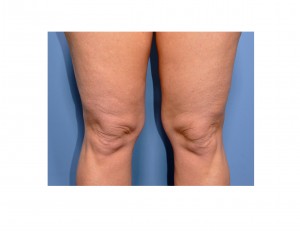Background: As liposuction has evolved over the past thirty years, it has undergone numerous developments most of them technological. But besides improvements in how effectively fat can be extracted, the use of liposuction has been applied to every conceivable body part from the neck down to the ankles. The development and use of small cannulas has enabled liposuction to be used in even the smallest fat collections. Smaller fat extractions have been termed liposculpture, implying subtle reshaping rather than just large volume reduction.
The legs are a frequent site of liposuction surgery. While many women do not like the appearance of their legs and often wished they were smaller overall, circumferential leg reduction by liposuction is not a practical or highly successful approach. Most leg liposuction is about changing its silhouette with reduction of the outer thighs (saddle bags), inner thighs and knees. Fat reduction is these areas can make the leg more shapely, although not always thinner or smaller.
The knee makes a valuable contribution to the shape or outline of the inner leg. Ideally, the line of the inner leg makes a small break or bulge as it crosses the knee. It then turns inward below the knee to separate it from the outward convexity of the upper part of the calf muscle. If a line is drawn from the upper inner thigh down to the bulge of the inner calf muscle, the size of the knee should not pass beyond that line. Large fat collections of the knee make it bulge outward and obscure the shape of the patella over the central knee.

Under general anesthesia, the knees and inner thighs were infiltrated with a Hunstad solution. The other body procedures were completed first, giving the solution plenty of time for maximal vasoconstriction. From a small incision in a popliteal skin crease in the inner knee, a 3mm cannula was used to remove over 75ccs from both inner knee areas. Focus was made to create a deeper indentation below the knee above the calf muscle. Medial patellar fat was also extracted. The inner thigh was then liposuctioned from different incisions above the knee.


Case Highlights:
1) The knee is one of the smallest areas on the body to liposuction but can have a dramatic effect on the shape of the inner leg.
2) Liposuction of the knee is unique because it is the only area on the body that fat removal is done across a moveable joint.
3) Recovery from knee liposuction is prolonged with swelling and stiffness of the knees for up to six weeks after surgery.
Dr. Barry Eppley
Indianapolis, Indiana


